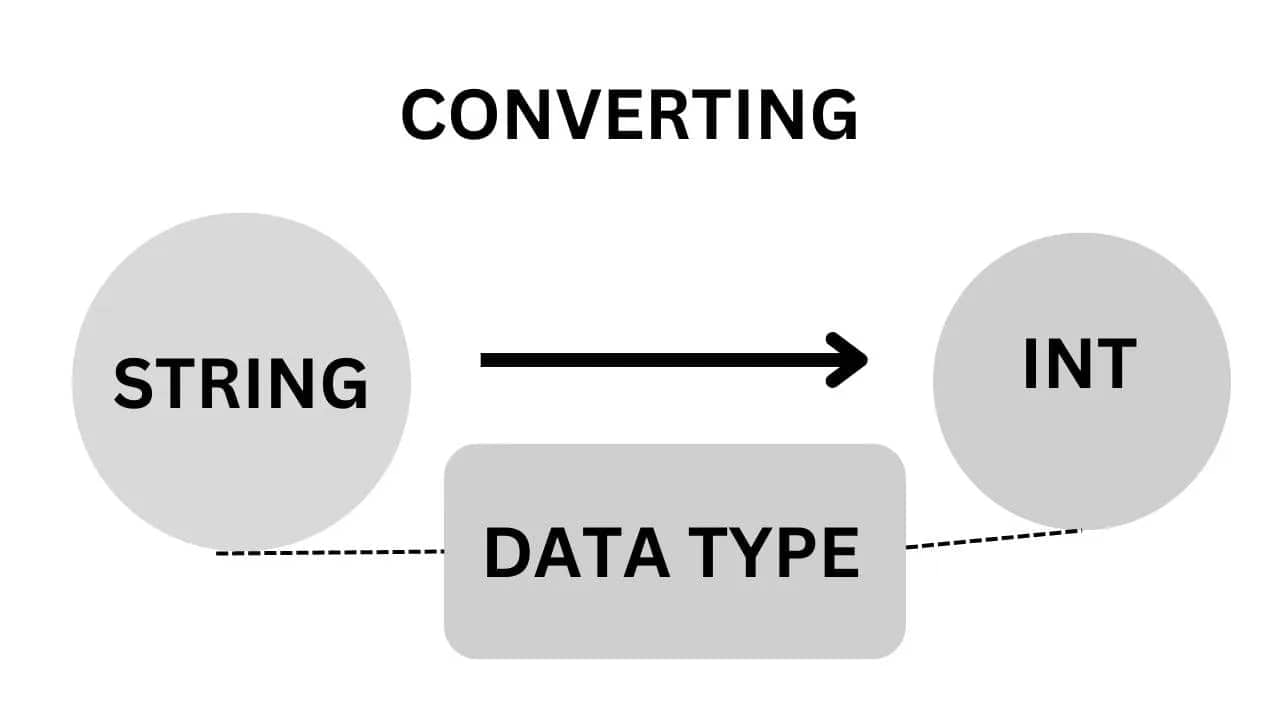Converting Strings to Integers in Java: A Comprehensive Guide with Examples
In Java programming, data conversion is a common task that developers encounter. One frequent conversion is transforming a string into an integer. This operation is crucial when dealing with user inputs, file parsing, or other scenarios where numerical data in string form needs to be processed. In this article, we will delve into the process of converting a string to an integer in Java, discussing the techniques, potential pitfalls, and providing illustrative examples.
Methods of Converting Strings to Integers
Java offers multiple methods for converting strings to integers. We will explore two primary approaches: using the Integer.parseInt() method and the Integer.valueOf() method.
1. Integer.parseInt() Method
The parseInt() method, a part of the Integer class, is widely used for converting strings to integers. The above function accepts a string value and with the help of the Wrapper class Integer and its function parseInt() convert it into an integer value. If the provided string is not a valid integer representation, a NumberFormatException will be thrown. Here’s the syntax of the method:
public static int parseInt(String s) throws NumberFormatExceptionExample:
public class StringToIntExample {
public static void main(String[] args) {
String numberStr = "123";
int convertedNumber = Integer.parseInt(numberStr);
System.out.println("Converted Number: " + convertedNumber);
}
}1. Integer.parseInt() Method
The valueOf() method, also part of the Integer class, is an alternative approach to converting strings to integers. It returns an Integer object that encapsulates the converted integer value. Similarly, if the string cannot be parsed into an integer, a NumberFormatException will be thrown.
public static Integer valueOf(String s) throws NumberFormatExceptionExample:
public class StringToIntExample {
public static void main(String[] args) {
String numberStr = "456";
Integer convertedNumber = Integer.valueOf(numberStr);
System.out.println("Converted Number: " + convertedNumber);
}
}Handling Exceptions
When converting strings to integers, it’s essential to handle the NumberFormatException that might be thrown. This exception occurs when the provided string is not a valid integer representation. To mitigate this, use try-catch blocks or other error-handling mechanisms.
Converting strings to integers is a fundamental operation in Java programming, often required to process input data and perform calculations. In this article, we explored two primary methods for achieving this: Integer.parseInt() and Integer.valueOf(). It’s important to remember that these methods may throw a NumberFormatException, so proper exception handling is crucial.
By mastering these techniques and understanding the potential pitfalls, Java developers can confidently manipulate string-based numerical data, making their applications more robust and user-friendly.
Dealing with Edge Cases
While the methods mentioned above work well for standard integer conversions, there are a few edge cases to be aware of:
- Leading and Trailing Whitespace: If the input string contains leading or trailing whitespace characters, the conversion methods will throw a
NumberFormatException. It’s essential to trim the input string before attempting the conversion.
String numberStr = " 789 ";
int convertedNumber = Integer.parseInt(numberStr.trim());- Non-Numeric Input: If the input string contains non-numeric characters, the conversion will fail. Therefore, it’s a good practice to validate the input string before attempting the conversion, especially if the input is provided by users.
String numberStr = "abc123";
if (numberStr.matches("\\d+")) {
int convertedNumber = Integer.parseInt(numberStr);
} else {
System.out.println("Invalid input");
}- Overflow and Underflow: The
intdata type in Java has a limited range, from approximately -2.1 billion to 2.1 billion. If the input string represents a number outside this range, the conversion will result in an overflow or underflow. In such cases, consider using theLong.parseLong()orBigIntegerfor larger numbers.
String largeNumberStr = "2147483648";
long convertedNumber = Long.parseLong(largeNumberStr);Advanced Conversion: Radix
The methods demonstrated above assume that the input string represents a base-10 integer. However, you might come across scenarios where the input is in a different numeric base, such as binary, octal, or hexadecimal. Both parseInt() and valueOf() methods provide an overloaded version that accepts an additional argument representing the desired radix (base).
Example:
String binaryStr = "10101";
int convertedBinary = Integer.parseInt(binaryStr, 2); // Converts binary to decimal
System.out.println("Converted Binary: " + convertedBinary);Conclusion
Converting strings to integers is a fundamental skill for Java developers. The Integer.parseInt() and Integer.valueOf() methods are essential tools for accomplishing this task. By following the examples and considerations outlined in this article, developers can confidently handle string-to-integer conversions while ensuring their applications are robust and error-resistant.
Always keep in mind the potential exceptions, edge cases, and validation techniques when dealing with user inputs or external data. With these techniques at your disposal, you’ll be well-equipped to tackle the challenges of string-to-integer conversion in your Java programming endeavors.
Best Practices for String-to-Integer Conversion
While the process of converting strings to integers might seem straightforward, there are several best practices to keep in mind to ensure efficient, reliable, and maintainable code:
- Exception Handling: As mentioned earlier, both
parseInt()andvalueOf()methods can throw aNumberFormatExceptionif the input string is not a valid integer representation. Always surround your conversion code with try-catch blocks to gracefully handle such exceptions and provide meaningful error messages to users.
try {
int convertedNumber = Integer.parseInt(inputStr);
// Rest of the code
} catch (NumberFormatException e) {
System.out.println("Invalid input format");
}- Use Specific Conversion Methods: Avoid using generic conversion methods like
Double.parseDouble()when expecting integer values. Using the appropriate conversion method ensures consistency and reduces the risk of unexpected results. - Consider Data Validation: Before attempting the conversion, consider validating the input string to ensure it contains only valid characters for the desired format. This is especially important when dealing with user inputs.
- Whitespace Handling: As demonstrated earlier, leading and trailing whitespace can cause conversion failures. Always trim the input string before attempting conversion to prevent issues.
- Localized Parsing: Be cautious when using the
parseInt()method for parsing strings with localized number formats. Different locales might use different decimal separators, which can lead to unexpected results. In such cases, use theNumberFormatclass to ensure consistent parsing across locales. - Radix for Non-Decimal Bases: When dealing with non-decimal bases, specify the appropriate radix parameter. This ensures accurate conversion from the specified base to the desired decimal representation.
- Performance Considerations: If you’re performing a large number of string-to-integer conversions, be mindful of performance. Repeatedly parsing strings can be resource-intensive. In such cases, consider optimizing by converting the strings in bulk or using alternative methods like regular expressions.
- Overflow and Underflow Handling: As discussed earlier, be aware of potential overflow and underflow issues. Consider using larger data types or error-handling mechanisms when dealing with numbers that may exceed the
intrange.
Converting strings to integers is a common operation in Java programming that developers encounter regularly. While it might seem simple, considering edge cases, potential exceptions, and best practices ensures that your code is reliable, maintainable, and robust.
By following the methods discussed in this article, mastering exception handling, and adopting best practices, you can confidently handle string-to-integer conversions in your Java applications. Always prioritize data validation and user-friendly error messages to provide a seamless experience for your application’s users.

